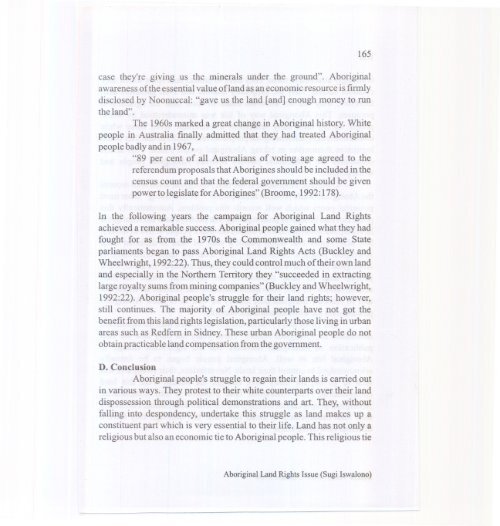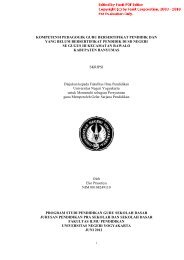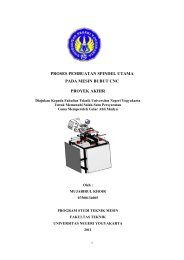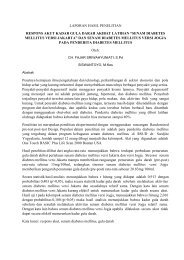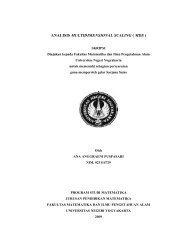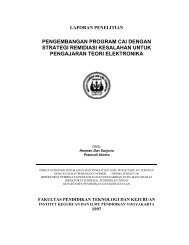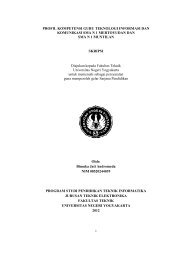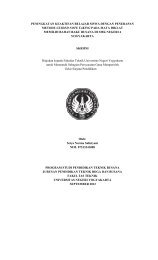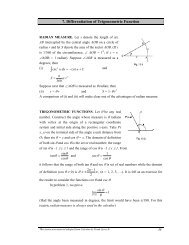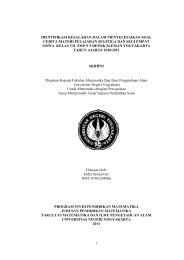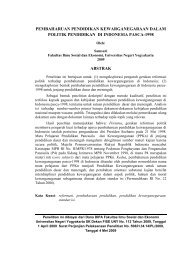aboriginal land rights issueas recorded in oodgeroo noonuccal's ...
aboriginal land rights issueas recorded in oodgeroo noonuccal's ...
aboriginal land rights issueas recorded in oodgeroo noonuccal's ...
You also want an ePaper? Increase the reach of your titles
YUMPU automatically turns print PDFs into web optimized ePapers that Google loves.
165case they're giv<strong>in</strong>g us the m<strong>in</strong>erals under the ground". Aborig<strong>in</strong>alawareness of the essentialvalue of<strong>land</strong> as an economic resource is f<strong>in</strong>nlydisclosed by Noonuccal: "gave us the <strong>land</strong> [and] enough money to runthe <strong>land</strong>".The 1960s marked a great change <strong>in</strong> Aborig<strong>in</strong>al history. Whitepeople <strong>in</strong> Australia fmally admitted that they had treated Aborig<strong>in</strong>alpeople badly and<strong>in</strong> 1967,"89 per cent of all Australians of vot<strong>in</strong>g age agreed to thereferendum proposals that Aborig<strong>in</strong>es should be <strong>in</strong>cluded <strong>in</strong> thecensus count and that the federal government should be givenpower to legislate forAborig<strong>in</strong>es" (Broome, 1992:178).In the follow<strong>in</strong>g years the campaign for Aborig<strong>in</strong>al Land Rightsachieved a remarkable success. Aborig<strong>in</strong>al people ga<strong>in</strong>ed what they hadfought for as from the 1970s the Commonwealth and some Stateparliaments began to pass Aborig<strong>in</strong>al Land Rights Acts (Buckley andWheelwright, 1992:22).Thus, they could control much of their own <strong>land</strong>and especially <strong>in</strong> the Northern Territory they "succeeded <strong>in</strong> extract<strong>in</strong>glarge royalty sums from m<strong>in</strong><strong>in</strong>g companies" (Buckley and Wheelwright,1992:22). Aborig<strong>in</strong>al people's struggle for their <strong>land</strong> <strong>rights</strong>; however,still cont<strong>in</strong>ues. The majority of Aborig<strong>in</strong>al people have not got thebenefit fromthis <strong>land</strong><strong>rights</strong> legislation, particularly those liv<strong>in</strong>g <strong>in</strong> urbanareas such as Redfern <strong>in</strong> Sidney. These urban Aborig<strong>in</strong>al people do notobta<strong>in</strong> practicable <strong>land</strong>compensation fromthe government.D. ConclusionAborig<strong>in</strong>al people's struggle to rega<strong>in</strong> their <strong>land</strong>s is carried out<strong>in</strong> various ways. They protest to their white counterparts over their <strong>land</strong>dispossession through political demonstrations and art. They, withoutfall<strong>in</strong>g <strong>in</strong>to despondency, undertake this struggle as <strong>land</strong> makes up aconstituent part which is very essential to their life. Land has not only areligious but also an economic tie to Aborig<strong>in</strong>alpeople. This religious tieAborig<strong>in</strong>al Land Rights Issue (Sugi Iswalono)


